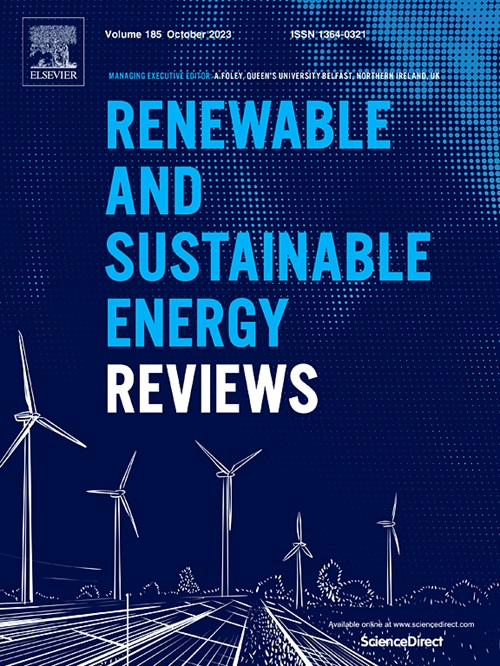Enhancing sustainable energy harvesting with triboelectric nanogenerators (TENGs): Advanced materials and performance enhancement strategies
IF 16.3
1区 工程技术
Q1 ENERGY & FUELS
引用次数: 0
Abstract
The growing global energy demand and the pressing need for sustainable power solutions have intensified the search for innovative energy harvesting technologies. Triboelectric nanogenerators (TENGs) have emerged as promising candidates due to their ability to convert mechanical energy into electrical energy efficiently. This paper provides a comprehensive review of advanced materials and performance enhancement strategies for TENGs, emphasizing their critical role in addressing the current energy crisis. This review explores the foundational principles and operational modes of TENGs, including vertical contact-separation, lateral sliding, single-electrode, and freestanding triboelectric-layer modes. The paper highlights TENGs’ unique attributes such as high efficiency at low frequencies, lightweight and flexible design, scalability, cost-effectiveness, and environmental friendliness, making them suitable for various applications. Key sections of this review focus on the advanced materials used in TENGs, including nanostructured surfaces and interfaces, hybrid and composite materials, and eco-friendly and biodegradable materials. Techniques such as nanoimprinting, etching, and nanomaterial coatings are discussed in detail, showcasing their impact on enhancing TENG performance. Furthermore, the review delves into performance enhancement strategies, covering multi-dimensional TENGs, optimization of contact electrification through surface modification, selection of triboelectric pairs, nano and microstructuring, and dynamic tuning mechanisms. By providing a thorough examination of these advanced materials and strategies, this paper underscores their importance in improving TENG efficiency and reliability, paving the way for sustainable energy solutions in the future.
利用摩擦电纳米发电机(TENGs)增强可持续能量收集:先进材料和性能增强策略
不断增长的全球能源需求和对可持续能源解决方案的迫切需求,促使人们加强了对创新能源收集技术的探索。摩擦电纳米发电机(TENGs)由于能够有效地将机械能转换为电能而成为有希望的候选材料。本文综述了新型材料及其性能提升策略,强调了其在解决当前能源危机中的重要作用。本文综述了teng的基本原理和工作模式,包括垂直接触分离模式、横向滑动模式、单电极模式和独立摩擦电层模式。该论文强调了teng的独特属性,如低频高效率、轻量化和灵活的设计、可扩展性、成本效益和环境友好性,使其适合各种应用。本文重点介绍了用于纳米材料的先进材料,包括纳米结构表面和界面材料、混合材料和复合材料、生态友好材料和可生物降解材料。详细讨论了纳米印迹、蚀刻和纳米涂层等技术,展示了它们对增强TENG性能的影响。此外,综述还深入探讨了性能增强策略,包括多维TENGs,通过表面改性优化接触电气化,摩擦电对的选择,纳米和微结构以及动态调谐机制。通过对这些先进材料和策略的全面研究,本文强调了它们在提高TENG效率和可靠性方面的重要性,为未来的可持续能源解决方案铺平了道路。
本文章由计算机程序翻译,如有差异,请以英文原文为准。
求助全文
约1分钟内获得全文
求助全文
来源期刊

Renewable and Sustainable Energy Reviews
工程技术-能源与燃料
CiteScore
31.20
自引率
5.70%
发文量
1055
审稿时长
62 days
期刊介绍:
The mission of Renewable and Sustainable Energy Reviews is to disseminate the most compelling and pertinent critical insights in renewable and sustainable energy, fostering collaboration among the research community, private sector, and policy and decision makers. The journal aims to exchange challenges, solutions, innovative concepts, and technologies, contributing to sustainable development, the transition to a low-carbon future, and the attainment of emissions targets outlined by the United Nations Framework Convention on Climate Change.
Renewable and Sustainable Energy Reviews publishes a diverse range of content, including review papers, original research, case studies, and analyses of new technologies, all featuring a substantial review component such as critique, comparison, or analysis. Introducing a distinctive paper type, Expert Insights, the journal presents commissioned mini-reviews authored by field leaders, addressing topics of significant interest. Case studies undergo consideration only if they showcase the work's applicability to other regions or contribute valuable insights to the broader field of renewable and sustainable energy. Notably, a bibliographic or literature review lacking critical analysis is deemed unsuitable for publication.
 求助内容:
求助内容: 应助结果提醒方式:
应助结果提醒方式:


